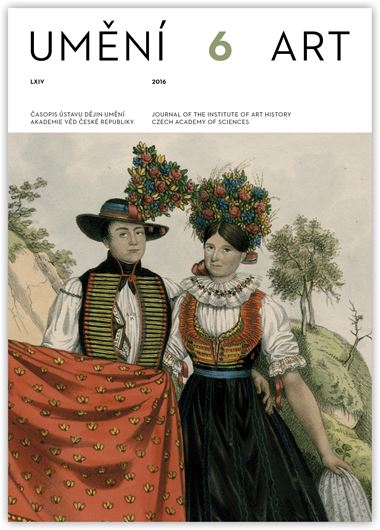Pavel Brodský – Martina Šumová – Kateřina Lemberková
Kancionál táborský a malíři Ludvík a Kateřina Oberdorferovi
There is a hymnal in the State District Archives in Tábor that has usually been considered to be one manuscript comprised of three volumes. The hymnal is the work of Stanislav Kantor and was commissioned, as surviving inscriptions indicate, for the Literati Brethren at the Church of the Lord’s Conversion on Mount Tabor. Kantor did the decorative work in the manuscripts, where there are a number of ornamental initials that are of poor quality and fluctuating style, which in character resemble the work of an amateur that is not far from folk art. However, the situation is more complicated. In reality this collection of hymns comprises two manuscripts – a two-volume manuscript and a one-volume manuscript. The two-volume hymnal (nos. 183–184), dated 1578–1580, is entirely the work of Stanislav Kantor. The one-volume manuscript (no. 182) is slightly different. . It is dated 1588, which indicates that it is a separate manuscript, albeit the work of the same scribe. This manuscript contains the same ornamentation, but it in addition has figural and heraldic decoration while this work is not outstanding, it is visibly different from that of Stanislav Kantor, and is without question the work of a professional illuminator. Surviving notes in the work indicate that it was the work of illuminator Ludvík Oberdorfer. However, the name of painter Kateřina Oberderfer is also found here and the symbol of the painter’s guild is used twice, which confirms that Kateřina had a hand in the decorations. Archival sources reveal that she became Ludvík Oberdorfer’s wife at a time close to which the manuscript dates from. She died in 1612, which, in line with art-historical analysis, refutes the earlier idea that the figural decorations are a later addition from the 17th century. Though the artistic quality of the work is not very strong, the manuscript is interesting from a cultural-historical perspective, as it was rare to find women actively working as artists in the Czech lands at that time.
Full-text in the Digital Library of the Czech Academy of Sciences:
https://kramerius.lib.cas.cz/uuid/uuid:4e463e51-a1af-4ce0-9f88-4d471fb3b3b4
< back

